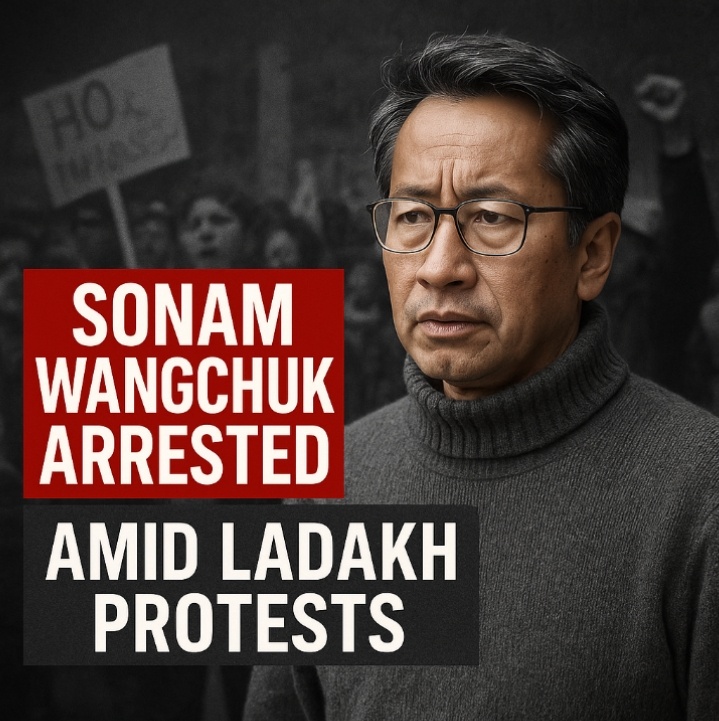Table of Contents
The Root of Ladakh’s Struggle
Ladakh, often called the “Land of High Passes,” is not just famous for its breathtaking landscapes and Buddhist monasteries—it is also a region with a strong voice for political autonomy. Since its separation from Jammu & Kashmir in 2019, local communities have raised concerns about governance, development, and the preservation of its unique cultural identity. Central to these discussions is the demand for full statehood and constitutional safeguards, especially under the Sixth Schedule, which protects tribal areas in India.
For years, these issues simmered quietly, but 2025 saw the tension erupt dramatically.
The Protest That Shook Ladakh

On September 24, 2025, thousands of residents gathered in Leh to demand statehood and protections for their region. The protest began peacefully but quickly escalated into clashes with security forces. Tragically, at least four people lost their lives, and dozens were injured during the unrest. Government buildings and police vehicles were set ablaze, prompting authorities to impose a strict curfew and suspend internet services to contain the situation.
These events revealed the deep frustration of residents who felt their voices were being ignored, and the scale of the protest made national headlines.
Sonam Wangchuk: A symbol of Ladakhi Resistance
Sonam Wangchuk is no ordinary activist. Globally recognized for his innovations in education and sustainable technology, such as the Ice Stupa project, Wangchuk has long been a champion for development. In 2024, he even undertook a fast-unto-death to demand constitutional safeguards for the region.
His activism extended beyond development projects; he has been vocal about Ladakh’s need for political recognition and protection of its cultural heritage. Because of his influence, Wangchuk naturally became a central figure in the protests, drawing attention both nationally and internationally.
The Arrest
Two days after the clashes, on September 26, 2025, Sonam Wangchuk was arrested under the National Security Act (NSA). Authorities accused him of inciting violence and alleged links with Pakistan-based groups—a claim that Wangchuk and his supporters vehemently deny. Wangchuk was transferred over 1,000 kilometers away to Jodhpur Central Jail, raising questions about the transparency and fairness of the arrest.

From the government’s perspective, Wangchuk’s influence and demands for statehood were complicating negotiations and contributing to unrest. They also cited alleged irregularities in his NGO, SECMOL, as additional reasons for legal action.
Public Reaction & Ongoing Tensions
Wangchuk’s arrest ignited widespread outrage across India and within Ladakh. Candlelight vigils, protests, and social media campaigns called for his release, portraying him as a symbol of peaceful dissent against government overreach. Human rights organizations criticized the authorities for using force against protesters and demanded an independent inquiry into the deaths.
In the region, The Apex Body Leh (ABL), representing local leadership, has refused to hold talks with the central government until Wangchuk and other detainees are released and a judicial inquiry is initiated. Meanwhile, the area remains under curfew, schools are closed, and normal life is disrupted.
Who’s Responsible?
Responsibility for the unrest is a complex question. While authorities blame Wangchuk and other protest leaders for inciting violence, local communities argue that years of neglect and failure to address legitimate demands created the perfect storm. The central government is criticized for heavy-handed tactics, while some blame regional political bodies for not pushing reforms sooner.
In short, multiple stakeholders share accountability—from policymakers and enforcement agencies to community leaders advocating for statehood.
What’s Next for Ladakh?
With national and international attention focused on the region, the upcoming talks between the central government and local leadership could determine the future. Will the area achieve greater autonomy or even full statehood? Will activists like Wangchuk be released and their demands addressed? The outcome remains uncertain, but one thing is clear: the people of Ladakh are determined to be heard, and their struggle is far from over.

